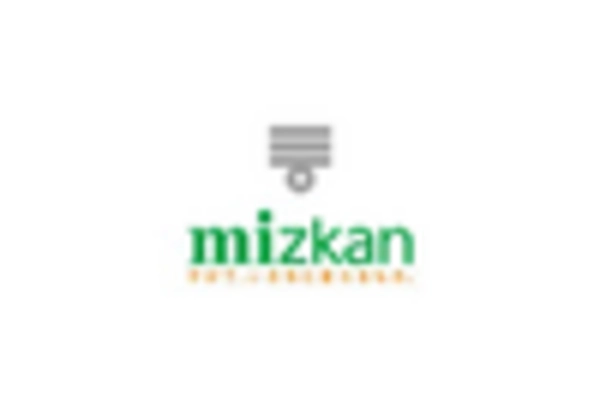Health and Wellness Trends
The Rice Wine Market is experiencing a shift as health-conscious consumers increasingly seek beverages perceived as healthier alternatives. Rice wine, often lower in alcohol content compared to other alcoholic beverages, is gaining traction among those who prioritize moderation. Additionally, rice wine is sometimes touted for its potential health benefits, such as aiding digestion and containing antioxidants. This trend aligns with broader consumer preferences for products that promote well-being. Market data suggests that the demand for low-alcohol and organic rice wines is on the rise, indicating a potential expansion in this segment of the Rice Wine Market. As consumers become more discerning, producers may need to adapt their offerings to meet these evolving preferences.
Cultural Heritage and Tradition
The Rice Wine Market is significantly influenced by the cultural heritage associated with rice wine production and consumption. In many regions, rice wine is not merely a beverage but a symbol of tradition and community. Festivals and rituals often incorporate rice wine, enhancing its status as a cultural staple. This cultural appreciation drives demand, as consumers seek authentic experiences tied to their heritage. The market has seen a rise in artisanal producers who emphasize traditional brewing methods, appealing to consumers' desire for authenticity. As a result, the Rice Wine Market is likely to experience sustained growth, with projections indicating an increase in market value as more consumers engage with these cultural narratives.
E-commerce and Digital Marketing
The Rice Wine Market is increasingly benefiting from the rise of e-commerce and digital marketing strategies. As consumers become more accustomed to online shopping, the accessibility of rice wine through various digital platforms is enhancing market reach. Producers and retailers are leveraging social media and online advertising to engage with consumers, showcasing their products and educating them about rice wine's unique qualities. This shift towards digital channels is particularly advantageous for smaller, artisanal producers who may lack the resources for traditional marketing. Data indicates that online sales of rice wine are projected to grow, suggesting that the Rice Wine Market could see a significant transformation as e-commerce continues to expand.
Innovative Flavors and Varietals
The Rice Wine Market is witnessing a surge in innovation, particularly in flavor profiles and varietals. Producers are experimenting with different rice types, fermentation techniques, and flavor infusions, appealing to a diverse consumer base. This trend towards unique and innovative products is likely to attract younger consumers who are eager to explore new taste experiences. Market analysis indicates that flavored rice wines, such as those infused with fruits or spices, are gaining popularity, potentially leading to increased market share for these products. As the industry evolves, the introduction of novel flavors may play a crucial role in driving growth within the Rice Wine Market, encouraging both new and existing consumers to engage with the product.
Sustainability and Eco-Friendly Practices
The Rice Wine Market is increasingly influenced by sustainability and eco-friendly practices. As consumers become more environmentally conscious, there is a growing demand for products that are produced sustainably. Many rice wine producers are adopting organic farming methods and eco-friendly packaging to appeal to this demographic. This trend not only aligns with consumer values but also enhances brand loyalty among environmentally aware consumers. Market data suggests that the segment of sustainably produced rice wine is likely to expand, as more consumers prioritize eco-friendly options in their purchasing decisions. Consequently, the Rice Wine Market may experience a shift towards more sustainable practices, potentially reshaping production and consumption patterns.


















Leave a Comment